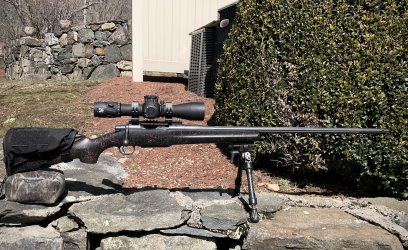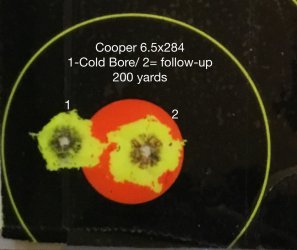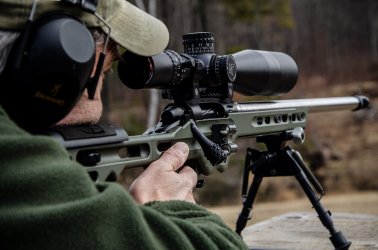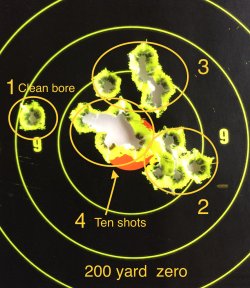My Tikka will keep good ammo within 1.5MOA on a good front/rear bag setup, no matter how many shots (no rest or cooldown time, but the barrel also doesn't wander when got.). 3MOA with cheap bulk ammo.
Also, stating that a 1.5 MOA gun is good to 400 on a 6" killzone is not nearly as important as shooter ability. Dabbling into longer range rifle shooting, I see a lot of talk about group size being a 1:1 factor for determining max range and it's not quite so simple.
1.5MOA means it will put any bullet into that group size during any shot, and is typically similar to your wobble zone on target. But if you shoot 10 shots, your crosshair spends far more time comparatively within a much smaller area as it dances around, and any given round will most likely shoot far closer to center than your max group size if you breaks it properly.
Coming from archery we say to "accept the pin float and let the shot break" as 9/10 times a well-executed shot will place the arrow far closer to center than trying to force the shot to break on the bullseye. Your pin can be dancing all over the chest of an animal, or the X on a target, but if you hold it together and execute properly then you'll almost always center punch what you're aiming at.
So going back to the example, a 1.5MOA gun will hit a 6" target far more often than not at, say, 600 yards, and misses are statistically far more attributed to a poor shot or bad wind call than would ever be noticed if one had a legit 1MOA gun.
Also, stating that a 1.5 MOA gun is good to 400 on a 6" killzone is not nearly as important as shooter ability. Dabbling into longer range rifle shooting, I see a lot of talk about group size being a 1:1 factor for determining max range and it's not quite so simple.
1.5MOA means it will put any bullet into that group size during any shot, and is typically similar to your wobble zone on target. But if you shoot 10 shots, your crosshair spends far more time comparatively within a much smaller area as it dances around, and any given round will most likely shoot far closer to center than your max group size if you breaks it properly.
Coming from archery we say to "accept the pin float and let the shot break" as 9/10 times a well-executed shot will place the arrow far closer to center than trying to force the shot to break on the bullseye. Your pin can be dancing all over the chest of an animal, or the X on a target, but if you hold it together and execute properly then you'll almost always center punch what you're aiming at.
So going back to the example, a 1.5MOA gun will hit a 6" target far more often than not at, say, 600 yards, and misses are statistically far more attributed to a poor shot or bad wind call than would ever be noticed if one had a legit 1MOA gun.




